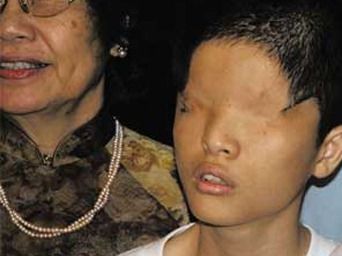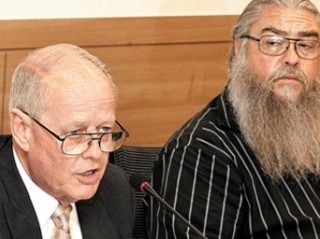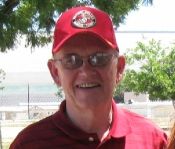
Publisher:
Bonnie King
CONTACT:
Newsroom@Salem-news.com
Advertising:
Adsales@Salem-news.com

~Truth~
~Justice~
~Peace~
TJP
Aug-09-2011 12:30

 TweetFollow @OregonNews
TweetFollow @OregonNews
Agent Orange: U.S. Veterans Asked To Help Korean Government Investigation
Robert O’Dowd Salem-News.comUncovering the reality of Monsanto and Agent Orange in South Korea.
 Agent Orange is not just a plague in Vietnam. |
(SEOUL, Korea) - Former U.S. Army Captain Phil Steward provided testimony to the Korean National Assembly on Monday, August 1st, on the U.S. Army’s use of herbicdes in Korea during 1968-1969, according to a news story in The Chosunilbo and confirmed in an email from Steward to me today.
The Chairman of the Korean National Sub-Committee asked Steward to help in obtaining statements from Korean veterans about their probably exposure to Agent Orange and other herbicides. Statements can be emailed to Steward’s attention at pesteward@hotmail.com.
Korean veterans who know or suspect probable use or exposure to Agent Orange and other herbicides should include in their emails their expressed written approval to provide information to the Korean government. together with name, unit you served with, dates of Korean service, Camp, and full current mailing and e-mail addresses and your phone number to share with the Korean Sub-Committee.
Phil Steward is a 100% disabled veteran who going ‘full court’ to spread the news to other U.S. Korean veterans and the Korean government. His email and testimony are shown below:
 As many know, I was invited to travel to Korea by the Korean National Assembly to testify before a Sub-Committee investigating numerous issues regarding use and disposal of Toxic Herbicides, including Agent Orange, in Korea in the 1960s and 1970s. The purpose of my trip was to try to get the U. S. Departments of Defense, Army and Veterans Affairs to reveal the full and transparent truth about the use of herbicides in Korea. My intent was to tell the Korean Government what we know about the use of herbicides and to join with them to demand the U. S. Government tell the complete truth to both the Korean people and the thousands of American Veterans who were poisoned by these toxic chemicals.
As many know, I was invited to travel to Korea by the Korean National Assembly to testify before a Sub-Committee investigating numerous issues regarding use and disposal of Toxic Herbicides, including Agent Orange, in Korea in the 1960s and 1970s. The purpose of my trip was to try to get the U. S. Departments of Defense, Army and Veterans Affairs to reveal the full and transparent truth about the use of herbicides in Korea. My intent was to tell the Korean Government what we know about the use of herbicides and to join with them to demand the U. S. Government tell the complete truth to both the Korean people and the thousands of American Veterans who were poisoned by these toxic chemicals.
The Army’s leadership at Camp Carroll, Korea, where the International Investigation got its start this past May, has produced some information about that Camp only, and they used a number of inaccurate statements about the rainbow herbicides and, more specifically, the dioxins which were in those herbicides. The DoD and DoA have been silent about the issues raised in my testimony. (Complete testimony text included below.)
Today I received a message from the Chairman of the Korean National Assembly’s Sub-Committee seeking additional help.
While many of you reading this post have submitted the Korean Service Questionnaire we sent out over the past two years, we need all Korean Service Veterans who submitted these, and those who haven’t to send a statement about your probable exposure to Agent Orange or other toxic herbicides while in Korea and any health effects you have had since then. If you submitted a completed Questionnaire, we need you to give us specific written approval (with your name, unit you served with, dates of Korean service, Camp, and full current mailing and e-mail addresses and your phone number) to share this with the Korean Sub-Committee. Please be aware that you may be contacted by the Legislative Aides working on this investigation and it is possible that you might be invited to travel to Korea to testify. You may be asked to speak to members of the Korean and U. S. Media as well.
Please review the text of my testimony below. And please keep in mind that if we can help the Korean people get the information and truth they are seeking, we will also be getting the truth we need for the hundreds of VA Claims waiting to justice for Korean Service Vets and their families.
The Korean Government and Citizens are putting a lot of pressure on our Congress to release the truth. Helping them WILL help US! Please respond directly to me at pesteward@hotmail.com
.
Thanks,
Phil Steward
TESTIMONY OF PHILIP E. STEWARD
Former Captain
2nd Engineer Battalion (Combat)
2nd Infantry Division
8th U. S. Army
Korea – 1968-1969
Speaker Park, Members of the National Assembly and interested Guests, let me begin by expressing my deep gratitude for being given this great honor to address this Assembly. When I served as a member of the United States Forces here in your country, now some 42 years ago, I never imagined having either the need or the opportunity to one day be standing in this position. I sincerely appreciate being invited to address this body and to present my background and what I know about the deployment of Agent Orange and other toxic herbicides in South Korea.
By way of background, I arrived in Korea in October of 1968 and was assigned to the 2nd Engineer Battalion located at Camp Peterson, located near the village of TONGGO-RI in the 2nd Infantry Division area. I was then a 2nd Lieutenant and was appointed to lead the Heavy Equipment Platoon. My responsibilities were to oversee the assignments and projects of approximately 40 Soldiers and numerous pieces of heavy construction equipment working throughout the 2nd Division sector from Camp Howze north to the DMZ and MDL.
In November, 1968 I was promoted to the rank of First Lieutenant and shortly thereafter I was appointed to serve as Battalion Maintenance Officer for the 2nd Engineers, also at Camp Peterson. In this position I had responsibility for maintenance of all vehicles and equipment in the Battalion. In this position I traveled almost daily throughout the 2nd Division Sector visiting the camps and job sites of our five line companies. It was during the above two assignments that I first became aware of the use of herbicide defoliants in Korea.
While at Camp Peterson I found that we had approximately two to three hundred 55 gallon drums of herbicide defoliant Orange stored in our motor pool area. I also observed soldiers from our Headquarters Company frequently using hand pump and trailer mounted spray equipment to spray areas about 100 meters wide around Camp Peterson and along the roads and walkways inside the compound. In addition, I saw on numerous occasions drums of this herbicides being loaded in trucks from the line companies and leaving the Camp Peterson Compound. I later found these drums went to the line company compounds and job sites in the forward areas.
In April of 1969 I was assigned to the position of Company Commander of E Company (Bridge), 2nd Engineer Battalion which had its headquarters at Camp Ethan Allen in what was then known as Artillery Valley, where I was later promoted to the rank of Captain and where I served until late December, 1969. This camp was located just about one-half mile north east of Camp McIntyre. There were several smaller villages and other compounds located around and between these two camps. As Company Commander of E Company, I was responsible for all Bridge operations in the Division area and for operation of the floating bridge located at the Spoonbill on the Imjin River. Because we had boats based on the bridge site at the Spoonbill, I was assigned the additional duty as Imjin River Police Commander operating Armed River Patrol Boats between Freedom and Libby Bridges on the Imjin River.
While serving in this Command position I had continuous and frequent exposure to the herbicide defoliants, including Agent Orange, Agent Blue and Monuron. In addition to having about 100 drums of herbicides on our compound at Camp Ethan Allen, we also kept drums of herbicide at the Spoonbill Bridge Camp and at the Patrol Boat docks at both Freedom and Libby Bridges. Soldiers under my command regularly sprayed these herbicides at both the North and South Bridgeheads of all three bridges and around the boat docks. Regular and frequent spraying was also done around the perimeter of Camp Ethan Allen and along the roadside drainage ditches running along our Camp’s fence line. Since these ditches carried water into the nearby stream, it goes without question that the herbicides would be carried into the stream and into and through the villages in the area. It was common to see area village citizens washing clothing and bathing in these streams.
In 2005 I began researching the numerous health problems I was having and learned, purely by accident, that most of the conditions most probably were caused by my exposure to the toxic herbicides Agent Orange, Agent Blue and Monuron we worked with in Korea. I have since been rated 100% Disabled due to these exposures in Korea. In particular, I have Ischemic Heart Disease/Coronary Artery Disease, Type II Diabetes, Peripheral Artery Disease in both legs and arms, Diabetic Neuropathy in both legs, Cataracts in both eyes, and several skin cancers. I suffer from high blood pressure and, although I am only 63 years old, sometimes have great difficulty walking or standing for long periods of time. 2nd Engineer Battalion and the others served in numerous units throughout South Korea. Of the men who served in my Company, three have died from diseases or conditions related to exposure to these toxic herbicides. I know of two other Veterans from the 2nd Engineers who have died from Agent Orange Dioxin Poisoning.
I belong to and participate in numerous Veteran Web Groups on the Internet, and I serve as President of the Board of Directors of Veterans-For-Change, an advocacy and information organization working to help Veterans get the Government Benefits promised, but commonly denied, over the years. Every day I hear from more and more Veterans who are fighting with the U. S. Department of Veterans Affairs for health care and compensation because of being poisoned by these toxic herbicides.
For many years, the U. S. Department of the Army, Department of Defense and Department of Veterans Affairs have stuck to the claim that these herbicides were only sprayed along the south side of the DMZ in Korea from April, 1968 through July, 1969. They have also stated that only ROK Army personnel did the spraying and that no American Personnel actually sprayed these chemicals. Honorable Members of the Assembly, those statements by the U. S. Government are NOT TRUE!
I have just recently received a copy of a ruling issued by the Department of Veterans Affairs Appeals Management Center, Board of Veterans Appeals which states –“Letter from the Department of the Army, Center for Unit Records Research, dated July 23, 2008 notates and verifies that herbicides were used in Korea from 1962 to 1970 from the DMZ line to I Corp Headquarters and the 1st ROK Army and sprayed with hand sprayers and trailer mounted apparatus during that time period.” This document further states that “herbicides orange, blue and Monuron were used in Korea from 1962 to 1970”.
I am not aware of any incidents of any herbicides being buried during my period of service in Korea. We used what we had and did not dispose of any of our stocks. However, when my men finished a spraying assignment, all of the spray equipment was washed and cleaned in the area wash points. Typically these wash points were in the area streams or smaller rivers and any remaining chemicals in the sprayers were flushed into the streams. In addition, the men washed out their uniforms or they were washed by the Korean civilian housekeepers in the wash area on the compound. Contaminated water thereby entered the water ways and, ultimately the water supplies for the Camps and the local villages. No safety precautions or disposal instructions were ever passed to us (or me as unit Commander) by higher Commanders. In fact, we were told “it is totally safe and won’t hurt you at all.” We were told “you can drink it, brush your teeth with it or bathe in it – it won’t hurt you”. Those were lies. According to long hidden information obtained over the past several years, the U.S. Army, Department of Defense and our Government knew these herbicides contained Dioxins and that those Dioxins were dangerous to the health of humans and animals, at least as early as 1967.
Also in 1967, the U.S. Army Chemical Command issued a warning about storing motor fuels in empty herbicide drums because the toxic properties and effects of the herbicides would be distributed in un-intended areas through vehicle and equipment exhaust. They also cautioned against using the empty drums for any other purposes. At both Camp Peterson and Camp Ethan Allen, and at our Bridge Site Camp at the Spoonbill, we stored Diesel fuel in these (seemingly) empty drums outside our Quonset buildings during the winter months to fuel our space heaters. Because these heaters were diesel fueled, they emitted heavy smoke (smog) into the air. With the colder outside air the smoke was held close to the ground and it was very common to see a brownish black cloud floating throughout the area around all U.S. Camps – and the nearby villages – all throughout the winter.
I have learned that during the same time frame the Army’s Chemical Command issued warnings in Vietnam about burning defoliated areas because the killing properties were being carried by the winds to non-target areas downwind, sometimes as far as two hundred miles. None of these warnings or directives ever reached local commanders, like in Korea. Therefore thousands of U.S. and ROK Soldiers, and likely thousands more Korean Civilians were poisoned just from the smoke and exhaust.
I have appeared here today not just to share my story and report on the difficulties being encountered by American Veterans who have been poisoned by our Government while serving here in Korea, but also to hopefully offer some answers for the citizens of Korea about why so many have suffered so many illnesses over the past nearly 50 years.
Here is the truth!
The U.S. Department of Defense and Department of the Army have not revealed the complete truth and facts about storage, transporting, deployment and disposal of Agent Orange and the other toxic herbicides in Korea. Clearly they have documentation which has been kept hidden for many years about when these chemicals were used and where. The U.S. DoD and DoA have, in conjunction with the Department of Veterans Affairs, gone to great lengths to keep the real facts hidden from American Veterans. Clearly there is no reason to think they have not done to same toward your Government.
If the truth and the complete facts are revealed, the costs to the American Government in compensation and remediation, not to mention medical care, would be astronomical. And I submit that this is exactly why the truth has not been fully revealed.
Right now, this Assembly and the Citizens of South Korea are in a unique position to demand full disclosure and revelation of the truth by the U.S. Government. Just a little more than two weeks ago a new Commander assumed control of the U.S. Military operations here in Korea. On July 14th, Army General James D. Thurman assumed command of United Nations Command, Combined Forces Command and U.S. Forces Korea. In his address at the recent Change of Command Ceremony, General Thurman said one of his priorities is to strengthen the South Korean-U.S. alliance. I believe there is no better way to accomplish this than full, transparent disclosure of all of the facts about Agent Orange and other toxic herbicides in Korea.
This full, transparent disclosure must, of necessity, include the release of all documents and records detailing what quantities of what herbicide formulas were ordered and received in Korea since the end of the Korean War including dates ordered and received. It must also include facts on the methods of shipping, ports of entry, all locations where the herbicides were transported to, or through, and all locations where the herbicides were stored, kept, used, sprayed or disposed of. The U.S. Government must also conduct interviews with as many American Veterans as possible who have served in South Korea since the end of the Korean War to determine the facts about their exposure to these toxic herbicides and health issues. Doing so with help to pin point locations and civilian villages where exposure also likely occurred.
Personally, I stand ready to assist both the Korean Government and the U.S. Government in such an effort to bring about the truth.
Thank You.
We were sent to Korea to help protect its people from attacks by Communist North Korea during the 1960′s – We fought, worked hard and many died in this 2nd Forgotten War. During this time, the Army used highly toxic chemicals to defoliate many areas ‘for our safety’. The truth, however, is that the Army poisoned us! Now, 40 years later
the Veterans Administration is making us fight new battles in that same war. And the poisoning continues today while the VA continues to deny us care and compensation… Info? pesteward@hotmail.com
and Please visit these Group Sites:
- veteransinfo.org
- korea Cold war veterans
- Veterans info
- AO Awareness and Info
- VETERANS FOR CHANGE
- Veterans Wives Families
_________________________________
 Bob O’Dowd is a former U.S. Marine with thirty years of experience on the east coast as an auditor, accountant, and financial manager with the Federal government. Half of that time was spent with the Defense Logistics Agency in Philadelphia. Originally from Pennsylvania, he enlisted in the Marine Corps at age 19, served in the 1st, 3rd, and 4th Marine Aircraft Wings in 52 months of active duty in the 1960s. A graduate of Temple University, Bob has been married to Grace for 31 years. He is the father of two adult children and the grandfather of two boys. Bob has a blog site on former MCAS El Toro at mwsg37.com. This subject is where Bob intersected with Salem-News.com. Bob served in the exact same Marine Aviation Squadron that Salem-News founder Tim King served in, twenty years earlier. With their combined on-site knowledge and research ability, Bob and Tim and a handful of other ex-Marines, have put the contamination of MCAS El Toro on the map. The base is highly contaminated with TCE, trichloroethelyne
Bob O’Dowd is a former U.S. Marine with thirty years of experience on the east coast as an auditor, accountant, and financial manager with the Federal government. Half of that time was spent with the Defense Logistics Agency in Philadelphia. Originally from Pennsylvania, he enlisted in the Marine Corps at age 19, served in the 1st, 3rd, and 4th Marine Aircraft Wings in 52 months of active duty in the 1960s. A graduate of Temple University, Bob has been married to Grace for 31 years. He is the father of two adult children and the grandfather of two boys. Bob has a blog site on former MCAS El Toro at mwsg37.com. This subject is where Bob intersected with Salem-News.com. Bob served in the exact same Marine Aviation Squadron that Salem-News founder Tim King served in, twenty years earlier. With their combined on-site knowledge and research ability, Bob and Tim and a handful of other ex-Marines, have put the contamination of MCAS El Toro on the map. The base is highly contaminated with TCE, trichloroethelyneYou can email Bob O’Dowd, Salem-News.com Environmental and Military Reporter, at this address: consults03@comcast.net


Salem-News.com:



Terms of Service | Privacy Policy


All comments and messages are approved by people and self promotional links or unacceptable comments are denied.
thomas strachan September 18, 2017 4:47 pm (Pacific time)
I was stationed at camp howze 73 74 75 76 I was brigade commanders aide and worked in operatioms. got out of service 78 was playing softball with friends when my leg broke off at the knee. mayo clinic said it was defently caused by exposere from the service VA says I don't have proof. iwas up on the zone a lot in my job I know what was going on nothing crossed the commanders desk without going through me first.at this time i'm 30% so far I've lost a knee a hip to tumers that mayo clinic says no body has ever had. hopefully more of our brothers will come forward and we can get our dues.
Kimchiman13 June 25, 2014 2:08 pm (Pacific time)
Korean DMZ veterans are getting screwed still. 68 to 71 is only a token presumptive dates. Many of us who served after 71 to 91, are now suffering from A.O illnesses and same cases our children from birth defects. Many vets don't even know they were exposed...................
steven humble February 26, 2012 2:21 pm (Pacific time)
served korea 68/69 worked at gateway messhall ascom depot witnessed spaying toxic chemical around mess hall many times while working
Editor: Thanks Steven, please feel free to contact us via email if you want to get this out, thanks. tim@salem-news.com
Tim King
[Return to Top]©2026 Salem-News.com. All opinions expressed in this article are those of the author and do not necessarily reflect those of Salem-News.com.